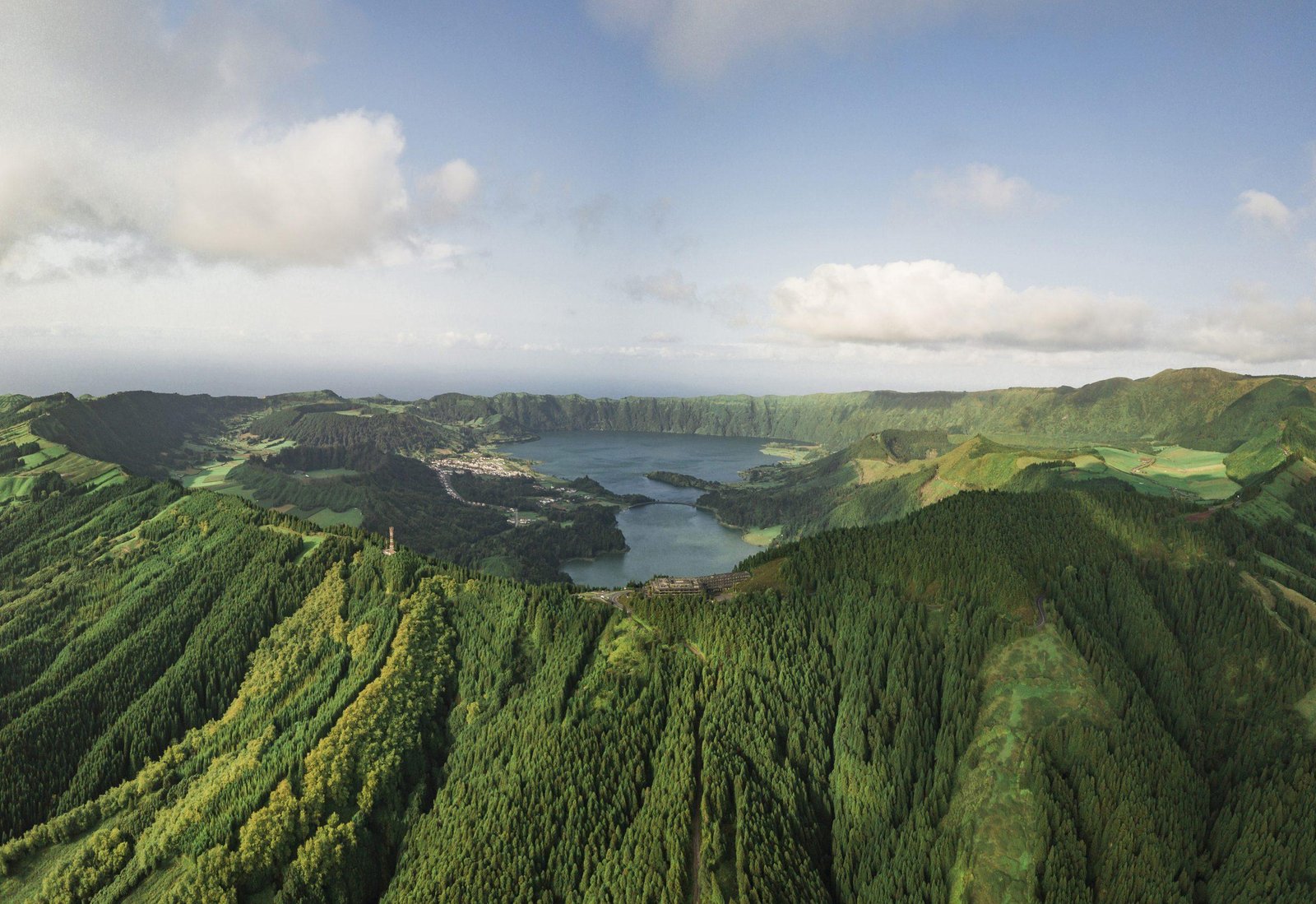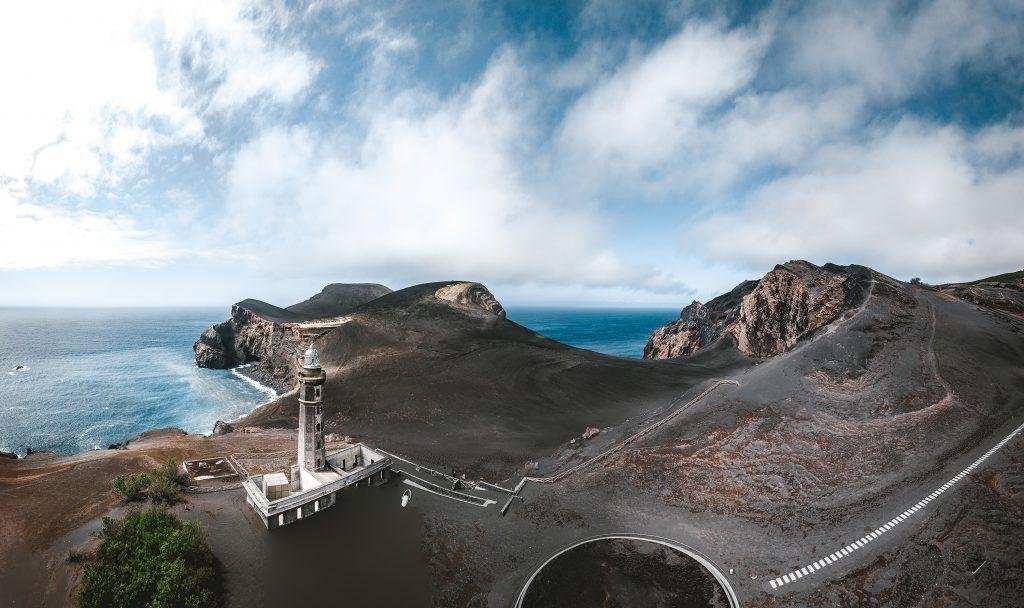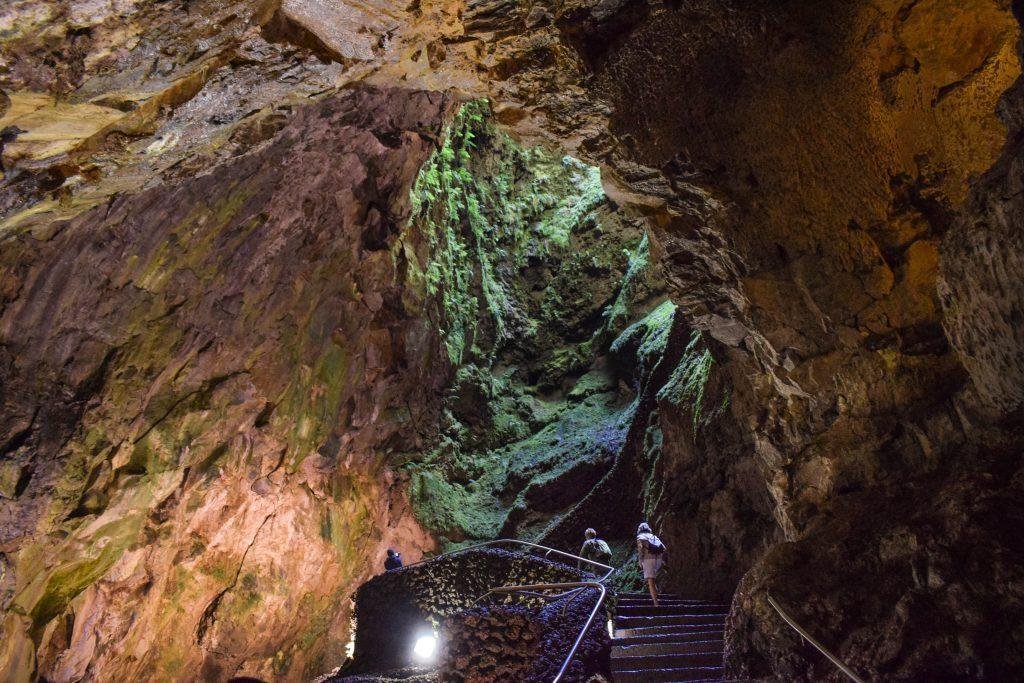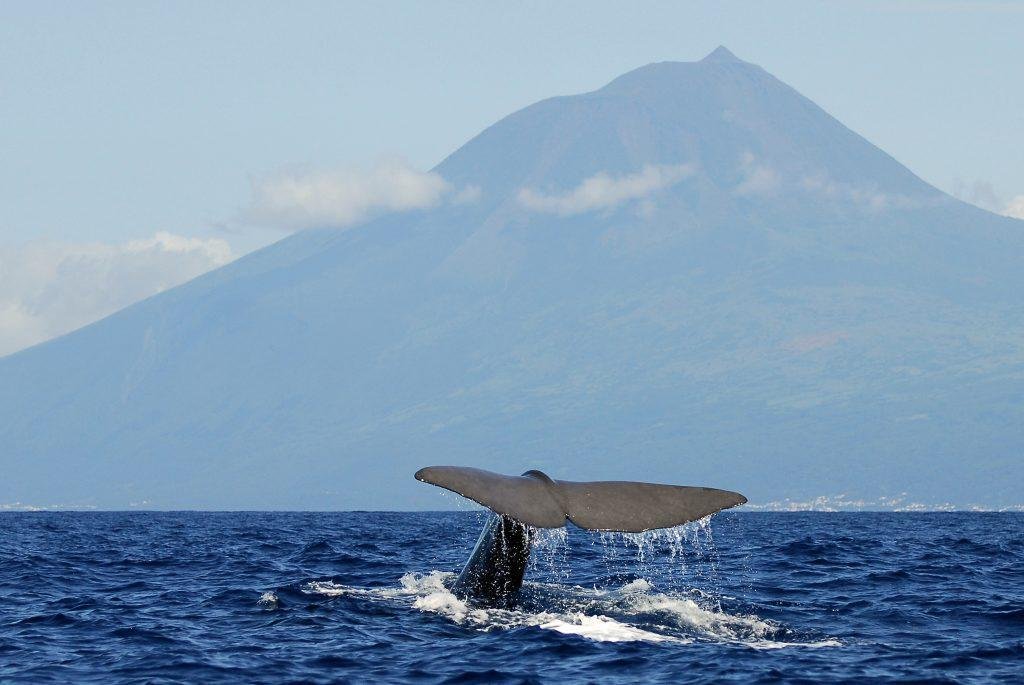
Where volcanic landscapes and exhilarating whale watching meets fine wine and lazy days on the beach, one visit to the Azores is never enough

The Azores is a cluster of nine small Atlantic islands, part of Portugal, yet with their own distinct traditions and culture. Besides the ocean, which is always on the horizon, the most striking thing about the Azores is how green they are. The islands are a verdant paradise, a place where vibrant rows of hydrangeas line the edge of magnificent volcanic calderas. The Azores has a very different climate from the rest of Portugal – just to give you an idea, pineapples and bananas grow on some of the islands.
The Azores attracts those who love sport, nature, hiking and much more. Word about the islands has spread, and in 2020 the Azores was voted Europe’s ‘Leading Adventure Tourism Destination’ by the World Travel Awards. Furthermore, in 2019 it was the world’s first archipelago to be certified as an EarthCheck Sustainable Destination, providing a scientific basis to assess the environmental and social impact of tourism relative to the UN’s Sustainable Development Goals.

So much to discover
The Azores is divided into three groups: the eastern group of São Miguel and Santa Maria; the central group of Terceira, Graciosa, São Jorge, Pico and Faial, and the western group of Flores and Corvo.
The largest of the islands São Miguel and its main hub Ponta Delgada is most people’s first port of call. The island is perfect for a few days exploration, but many stay longer, and with good reason. Rent a car and spend the morning at Furnas, bathing in the iron-rich hot springs of the Terra Nostra garden, before taking a relaxing stroll around the tranquil 19th century grounds. Then, head on to the fumaroles of Furnas and marvel at the spitting geysers and gurgling volcanic mud. When it’s your stomach’s turn to rumble, try the delicious bolos levedos (large flat soft rolls) toasted, filled with cheese and ham.
On the western side of São Miguel are the twin lakes of Sete Cidades. With its emerald green waters sparkling in the sun, the caldera is regarded as one of the Seven Natural Wonders of Portugal, which actually understates its true majesty. There are numerous options for exploring Sete Cidades, and one of the most rewarding is a spectacular 12km around the caldera edge. Prepare well with a good guidebook, strong walking shoes, plenty of refreshments and sunscreen and prepare yourself for some of the most stunning views in the Azores – this is one hike that you’re unlikely to forget in a hurry.
Speaking of unforgettable, for the ultimate bathing experience, join the locals down at Ponta da Ferraria on the western-most tip of São Miguel for a hot-spring treat. Best enjoyed just after low tide, visitors to this unique natural attraction relax in the Atlantic while it’s gloriously warmed by a hot spring. There is no finer way to pass the time.
Ponta Delgada makes for a relaxing afternoon of sightseeing and exploring – be sure to take it into the evening and enjoy some of the Azores’ best restaurants. Fresh seafood abounds, washed down with a crisp, white wine from the vineyards of Pico.
The weather is pleasant at any time of year in the Azores, with an average winter temperature of 13˚C in winter, and a summer average of 27˚C. Furthest south, and known as the Island of Sun, Santa Maria and is where you’ll find the Azores’ best sandy beaches. Praia Formosa is a wide bay that is great for swimming. On the north-east coast, São Lourenço Bay is also a terrific spot to while away the hours to the sound of breaking waves. Backed by terraced vineyards, and dotted with whitewashed houses, a terrific scene unfolds as you cool off in the Atlantic surf. Like so many places in the Azores, the joy of Santa Maria is in hiring a car, meandering along country roads, stopping off to admire the stunning views and taking short walks accompanied by the sound of birdsong.

Sea to summit
Pico is home to the highest mountain in Portugal. Best seen from neighbouring Faial, the dormant volcanic cone stands at 2,351 metres, while the island’s rich volcanic soil is conducive to viticulture and ranks among Portugal’s most unique wine regions. A UNESCO World Heritage Site, the vines are fascinating to behold: rather than running in neat rows on trellises, they run along the ground, protected and underpinned by a network of black volcanic rocks. Each plot protects the vines from the elements, and the rocks heat up and stay warm during the night, which helps the grapes to ripen. The best place to sample the sumptuous reds and whites of Pico is at the restaurants across the islands. If ever there’s a place to buy local, it’s in the Azores.
Given its formidable height, reaching the summit of Mount Pico isn’t the breeze that many locals would have you believe. An experienced, approved local guide is essential, as is the right kit and a decent level of fitness.
A short ferry ride (6km) from Pico is Faial and the most popular marina in the Azores at Horta. Historically, the islands were a vital stop-off between Europe and the Americas, and many a captain down the years has breathed a sigh of relief to see Mount Pico towering on the horizon. The maritime culture is embraced to the full in the small but vibrant town, and Horta’s host of excellent restaurants and bars are replete with nautical memorabilia. Walking distance from the centre of Horta is a terrific sandy beach, Porto Pimm. This large bay is sheltered from the wind and is good for swimming. Around the beach are numerous vantage points to get a fabulous view of Mount Pico, as well as a handful of terrific cafes and restaurants.
The Capelinhos eruption
In September 1957, violent volcanic eruptions and earthquakes began off the coast of Faial and lasted for 13 months. At one point the eruption cloud rose 6,000 metres into the air, and the devastation formed a cone-shaped island. This was swept away by the sea, before further activity caused a new land mass to form. This tumultuous series of events, and the scale of the aftermath, is expertly captured at the outstanding Capelinhos Volcano Interpretation Centre on Faial and is not to be missed while on the island.

Spellbinding
The Azores is widely regarded as one of the best places in Europe for whale watching. A number of expert teams operate from Horta marina, run by conservationists and marine biologists keen to show you the resident sperm whales and dolphins. Humpback and even blue whales are frequent sightings as they pass on their way to feeding grounds – all the while dolphins put on a spectacular sideshow, determined not to be outdone by their more hefty relatives.
If you want to go back in time, Faial has a fascinating museum that reflects on the history of whaling around the islands – a practice that has been long-since banned.
Faial also has a vast volcanic caldera, 1,031m high. With good preparation and a map from the local tourist office, a dawn hike around the caldera rim is something to behold. At first light, a thick mist hangs inside the caldera which is slowly burnt off by the sun to reveal a verdant, untouched oasis. An area of unique scientific interest, excursions to the foot of caldera are only possible with specialist guides.
Covid safe
The Azores is currently one of the safest destinations in Europe for vacations according to European Best Destinations. This recognition is based on a low number of cases and on the Covid safe measures that have been adopted. This includes the mandatory RT-PCR test for the SARS-CoV-2 virus 72 hours before departure. Corvo is the first territory in Europe to be completely free of the virus.

Take it easy
To the north-east, Terceira is best known for the UNESCO World Heritage Site, Angra do Heroísmo. The first city in Portugal to receive the classification, Angra do Heroísmo dates back to the 1400s and even served as the capital city of Portugal. It is easy to spend a whole day exploring the historic buildings and fort, enjoying the fascinating Museu de Angra do Heroísmo, stopping off for a coffee along the way, or maybe something stronger. Overlooking the city is the remains of a volcano, Monte Brasil. A peaceful 7km trail loops the mountain and offers fine views over the city and bay. Terceira is also home to the largest laurel forest on the islands, while the spectacular and cavernous Algar do Carvão – a site of geological importance – should also be on your list while on the island.

Popular opinion is that Graciosa means ‘gracious’, either way, the island is super laid-back, even by Azores standards. The entire island has been part of UNESCO’s network of biosphere reserves since 2007 and is home to a series of Flemish-style, red-roofed windmills – evidence of prolific grain production over the centuries. Graciosa’s highest point is Pico Timão, which stands at 398 metres. Meanwhile the spectacular Furna do Exonofre, situated in the Caldeira da Ilha Graciosa, is well worth exploring. There is a good museum in Santa Cruz, and other than that, simply kick back and go with the flow – just don’t forget which day your plane leaves!
Wine and cheese lovers can create their own world-class experience while in the Azores. We know about the wine, and now to São Jorge for the cheese. Having gained PDO status in 1991 São Jorge’s strong cheese is fabulously good. The restaurants and cafes of Velas make a fine culinary setting, even if it is hard to take your eyes off the view across to Pico. With its range of terrific walks and stunning viewpoints, São Jorge is the perfect place to wine and dine a few days away, island style.

Land of the setting sun
Flores is the last place in Europe for the sun to set. The most western point of Europe is also home to some of the world’s most pristine biodiversity. Part of the UNESCO network of biospheres since 2009, the Isle of Flowers is world of cascading waterfalls, caldera lakes and sea cliffs 600 metres high. The stunning array of flora and virgin forests make Flores a nature lover’s dream, while only neighbouring Corvo rivals the bird life.
The smallest island in the archipelago, with just 465 inhabitants, Corvo is just about as remote as it gets. The island is ultimately a volcano that began to emerge from the sea some 730,000 years ago. The caldera lake is regarded as the best place in the archipelago for bird-watching. Much like Flores, this is a place where nature takes centre stage and those who make the effort to visit usually wish they could stay a lot longer. In many ways, this sums up the Azores – you come for a vacation, but you leave having been touched by something altogether more powerful – the force of nature.
Further information
